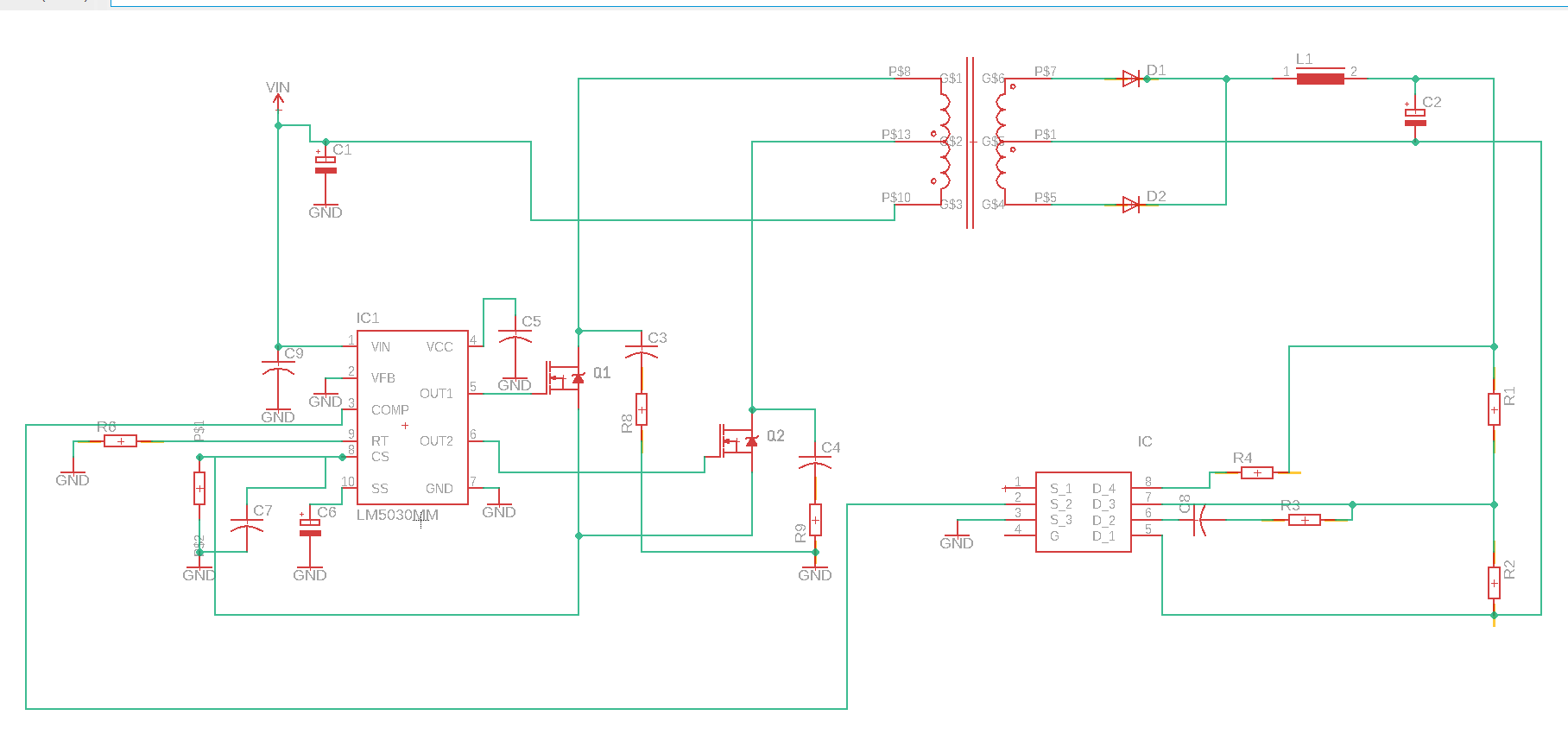Other Parts Discussed in Thread: LM3411
Hi,
This is my first time here. I hope my problem gets resolved. I am designing a push-pull converter using the LM5030 IC. I have tried the implementation on my PCB but the two outputs are not giving out voltages. I initially thought that the IC got damaged due to heat from solder reflow, but I have soldered over 5 ICs on PCBs yet none of them gives any waveform on the outputs. I measured the following voltages. Vin = 17.4V, Vfb = 0, COMP = 0.8v, VCC = 7.8V, SS = 4.92V, Rt = 2.04V, CS = 0V, OUT 1 =0, OUT 2 = 0. I have checked for short circuits but there is none. My latest suspect is the capacitor values. My question is do the capacitor values of VCC and SS decide if the output works. Otherwise, what could possibly be wrong with my measured values.
Thanks
Austin


